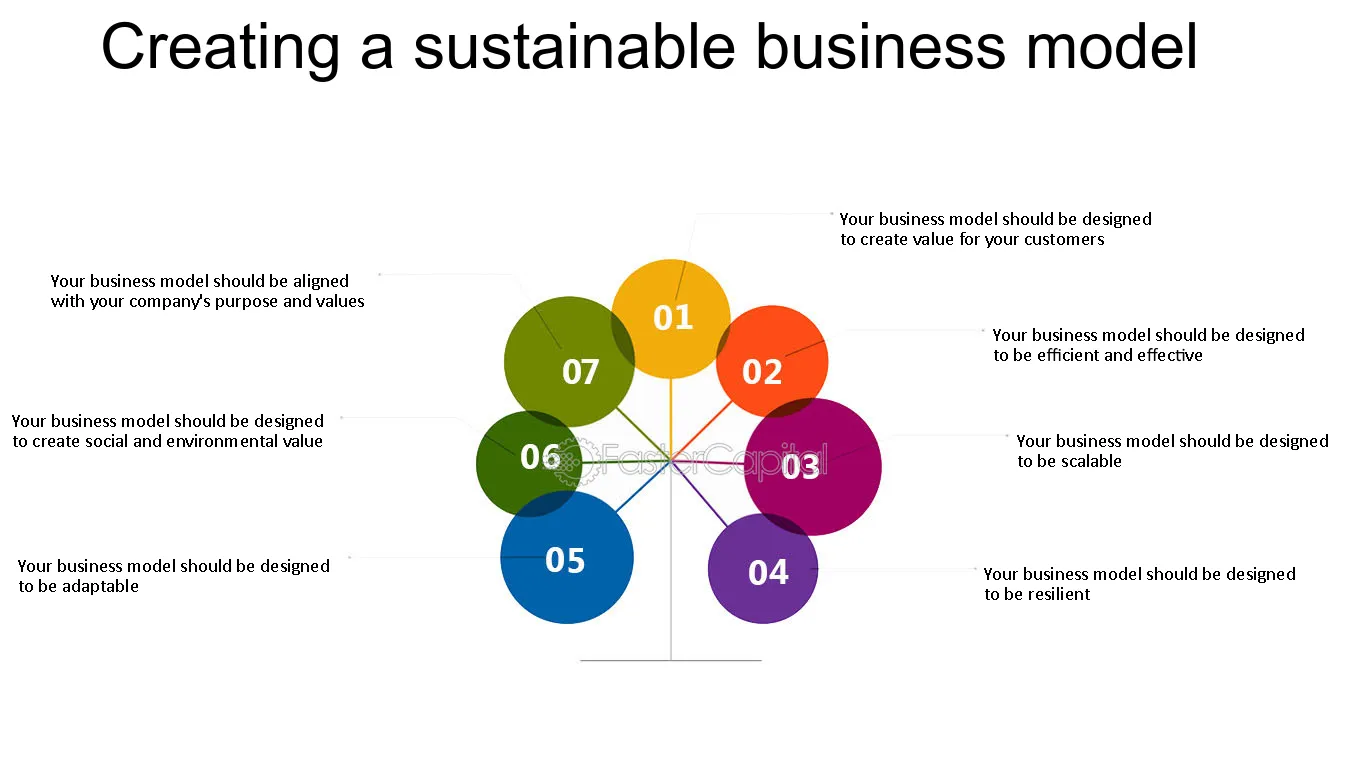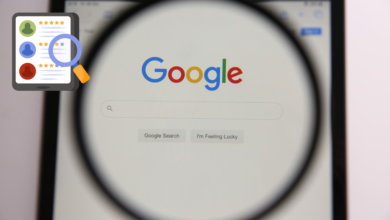Sustainable Business Model In an era of rapid environmental change and growing social consciousness, businesses are increasingly being called upon to adopt practices that ensure profitability and sustainability. The term “sustainable business model” has become a guiding principle for organizations striving to balance economic growth with environmental stewardship and social responsibility. This article explores what a sustainable business model entails, its benefits, key components, and steps businesses can take to create one.
What is a Sustainable Business Model?
A sustainable business model is a framework that allows a company to generate value while minimizing negative impacts on the environment, society, and future generations. Unlike traditional business models focusing primarily on short-term profits, sustainable models integrate environmental, social, and governance (ESG) factors into their strategy.
At its core, a sustainable business model seeks to:
- Reduce carbon footprints and resource consumption.
- Foster fair labor practices and equitable supply chains.
- Innovate products and services that contribute to a healthier planet.
- Ensure financial viability for long-term success.
By embedding sustainability into their DNA, businesses can future-proof themselves against regulatory changes, shifting consumer preferences, and resource scarcity.
Why is a Sustainable Business Model Essential?
Adopting a sustainable business model is no longer just an option—it’s a necessity. Here are some key reasons why:
1. Adapting to Consumer Preferences
Modern consumers are increasingly drawn to brands that prioritize sustainability. Surveys indicate that customers, particularly millennials and Gen Z, are willing to pay a premium for products and services from companies that demonstrate environmental and social responsibility. A sustainable business model enables companies to build stronger relationships with these value-driven customers.
2. Regulatory Compliance
Governments around the world are enacting stricter environmental and social regulations. From carbon taxes to plastic bans, the regulatory landscape is becoming more complex—a sustainable business model positions companies to comply with these laws seamlessly while avoiding fines or reputational damage.
3. Attracting Investors
Sustainability is now a critical factor for investors. ESG investing—where investors focus on companies with substantial environmental, social, and governance credentials—is rising. Companies that adopt a sustainable business model are more likely to secure funding and attract long-term investors.
4. Cost Savings and Resource Efficiency
Reducing energy usage, waste, and raw material consumption doesn’t just benefit the planet—it also reduces operational costs. A sustainable business model emphasizes resource efficiency, helping businesses save Money while boosting profitability.
5. Enhancing Brand Reputation
In today’s competitive market, reputation matters. Companies with a solid commitment to sustainability are perceived as ethical and forward-thinking, which can enhance brand loyalty and attract top talent.
Critical Components of a Sustainable Business Model
Creating a sustainable business model requires rethinking traditional practices and integrating sustainability into every facet of the business. Here are the critical components:
1. Circular Economy Principles
A sustainable business model often incorporates circular economy principles, prioritizing reducing waste and keeping materials in use for as long as possible. This involves designing products that can be reused, repaired, or recycled rather than discarded.
2. Energy and Resource Efficiency
Energy efficiency and resource optimization are cornerstones of sustainability. Businesses can achieve this by adopting renewable energy sources, improving supply chain efficiency, and implementing water and waste management practices.
3. Ethical Supply Chains
A sustainable business model ensures transparency and fairness throughout the supply chain. This includes sourcing raw materials ethically, treating workers fairly, and avoiding suppliers that exploit labor or harm the environment.
4. Innovative Product Design
Sustainability can drive innovation. Businesses should aim to create products and services that meet customer needs and minimize environmental impact. For example, developing biodegradable packaging or using renewable materials can set a company apart.
5. Stakeholder Engagement
Engaging with stakeholders—including employees, customers, suppliers, and local communities—is essential. Open communication fosters trust and ensures that a business’s sustainability efforts align with the expectations of its stakeholders.
6. Long-Term Vision
A sustainable business model requires a long-term perspective. For years, businesses should focus on strategies that ensure financial resilience, environmental preservation, and social well-being.
Steps to Build a Sustainable Business Model
Transitioning to a sustainable business model may seem daunting, but it is achievable with a structured approach. Here are the steps businesses can take:
1. Assess Current Practices
The first step is to conduct a sustainability audit. Identify areas where your business has the most significant environmental and social impact. This could include energy use, waste generation, supply chain practices, or community engagement.
2. Set Clear Goals
Define specific, measurable sustainability goals aligned with your company’s mission. For instance, you could aim to achieve carbon neutrality by 2030, reduce water usage by 50%, or source 100% renewable energy.
3. Engage Stakeholders
Involve employees, customers, and partners in your sustainability journey. Solicit their input and communicate your goals to foster collaboration and accountability.
4. Integrate Sustainability into Strategy
Sustainability should be embedded into your business strategy, not treated as a separate initiative. This means aligning sustainability goals with business objectives and making sustainability a core value.
5. Invest in Innovation
Explore new technologies, processes, and business models that can help your company achieve its sustainability goals. This could include investing in renewable energy systems, adopting digital tools to optimize logistics, or exploring sustainable product design.
6. Measure and Report Progress
Track your progress using key performance indicators (KPIs) and share your results transparently with stakeholders. Reporting frameworks like the Global Reporting Initiative (GRI) or Sustainability Accounting Standards Board (SASB) can help standardize your reporting.
Case Studies: Companies Leading the Way
Many companies have successfully adopted a sustainable business model, proving that profitability and sustainability can go hand in hand. Here are two notable examples:
1. Patagonia
Outdoor apparel brand Patagonia is a pioneer in sustainability. The company has embraced a sustainable business model by using recycled materials, promoting fair labor practices, and encouraging customers to repair and reuse products instead of buying new ones. Patagonia’s environmental activism has earned it a loyal customer base and a strong reputation.
2. Unilever
Unilever’s Sustainable Living Plan aims to decouple business growth from environmental impact. The company has committed to sustainably sourcing 100% of its agricultural raw materials and reducing greenhouse gas emissions across its supply chain. This approach has helped Unilever improve efficiency, reduce costs, and enhance brand equity.
Challenges in Implementing a Sustainable Business Model
While the benefits of a sustainable business model are clear, implementing one comes with challenges:
- Initial Costs: Transitioning to sustainable practices often requires upfront investment in new technologies or processes.
- Cultural Resistance: Employees and stakeholders may resist change, especially if they are accustomed to traditional business practices.
- Complex Supply Chains: Ensuring sustainability across a global supply chain can be challenging due to varying regulations and practices.
- Balancing Short-Term and Long-Term Goals: Striking immediate profitability and long-term sustainability requires careful planning and decision-making.
Conclusion: The Future of Business Lies in Sustainability
As businesses face mounting pressure to address environmental and social challenges, adopting a sustainable business model is no longer optional but a strategic imperative. Companies that embrace sustainability can unlock numerous benefits, from cost savings and regulatory compliance to enhanced reputation and customer loyalty.
Building a sustainable business model requires a shift in mindset, a commitment to innovation, and collaboration across the value chain. By taking bold steps today, businesses can secure their own future and contribute to a healthier, more equitable world for generations to come.
Now is the time to act. The path to long-term success starts with sustainability.




